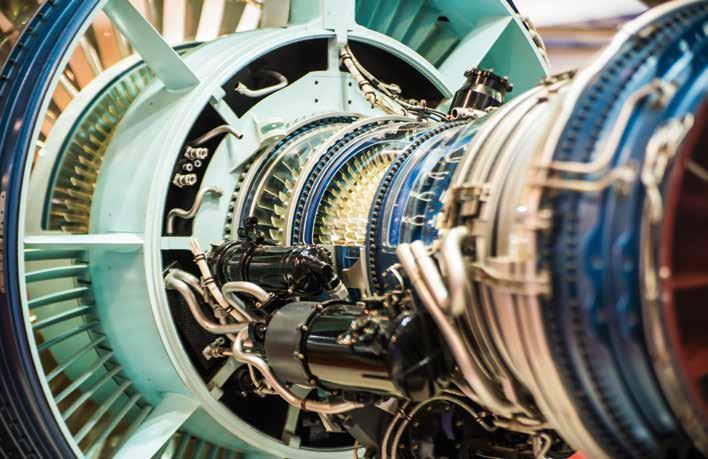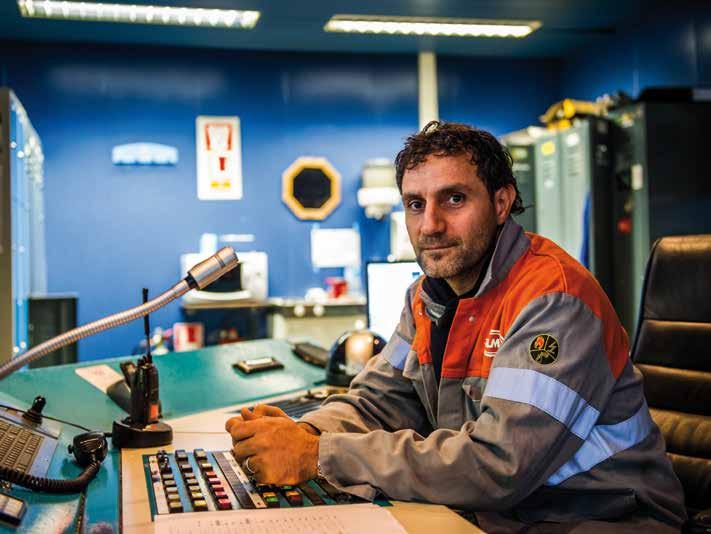
2 minute read
Walloon materials companies
New heights Walloon companies lift quality of composite materials for aviation sector
By Andy Furniere
The aviation industry is increasingly looking to lightweight and resistant composite materials to replace metal alloys such as aluminium, steel and titanium. With the help of the Walloon Region, many local companies are tapping into the potential of these materials.
Skywin, the region’s aerospace cluster, long ago identified composites – like thermosets (reinforced resins) and thermoplastics (reinforced plastics) – as a promising domain in aviation, and through regional development programmes has supported Walloon companies to adjust their R&D activities accordingly. Skywin also regularly organises events such as seminars to keep them up to date with the latest evolutions.
“Composite materials can make aviation structures lighter compared to the traditional metal alloys, while being just as high performing,” says Ashley Lyon, aeronautics and space expert at Wallonia’s foreign trade and investment agency (AWEX). “The reduction of weight is essential to companies because it allows aircraft to have more fuel, cargo and people on board.”
Thanks to new techniques, composites are becoming increasingly resistant and cheaper to produce. That doesn’t mean they don’t pose any challenges, however. Maintenance can be
difficult, as it’s hard to detect possible damage, and replacing aircraft structures made of composites can also be complicated. Still, the advantages are growing. The result is that aircraft of leading companies, such as the Boeing 787 Dreamliner and the Airbus A350, are made up of more than 50% composites. Thermosets are mostly used for structural parts, as they are more resistant, and thermoplastics for internal non-structural components.
The competition in this field is tough but Wallonia is holding its own, with about 20 companies providing cutting-edge products and services. Engineering company Coexpair, from Namur, has developed the innovative RTM (Resin Transfer Moulding) technique, which helps it to secure important contracts with the major international players in aviation. Hexcel’s Welkenraedt plant, on the other hand, is a specialist for example in prepregs and in honeycomb parts, which are important components of aerospace structures such as civil and defence aircrafts, helicopters and aero-engines.
Digital simulation company Open Engineering in Liège accurately predicts the performance of composite materials used for aerospace applications. Another Walloon company active in this field is Samtech (Siemens).
Apart from the businesses, the Skywin cluster also includes many research centres that have taken a special interest in composites. Sirris, the technology centre of the Belgian manufacturing industry, provides expertise and up-todate equipment for innovative composite processing technologies. R&D company Cenaero in Gosselies is another example.
While the aircraft industry is one of the leading markets for the businesses in this field, Lyon also identifies other significant prospects: “The space market focuses even more on the introduction of lightweight and resistant materials, in order to optimise the launching of satellites,” he says. “In recent years, the rapidly developing drone sector has also looked to composites to make their devices lighter, so less energy is needed to keep them airborne, which makes the batteries last longer.” AWEX itself supports the export activities of the Walloon companies in this field by helping them to participate at fairs and airshows. Next year, the Walloon companies will be present at the JEC World show in Paris, the Farnborough International Airshow in the UK and the Singapore Airshow.
skywin.be awex.be







